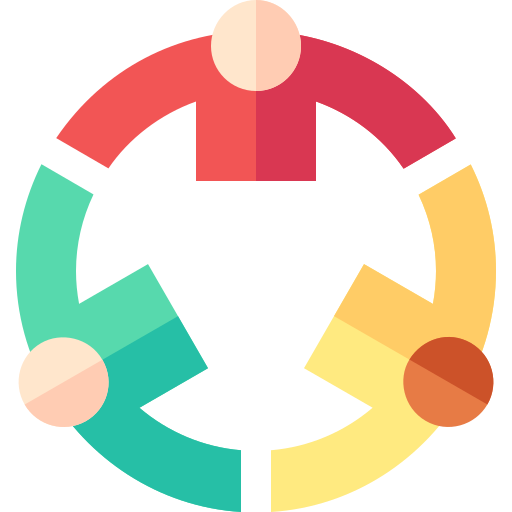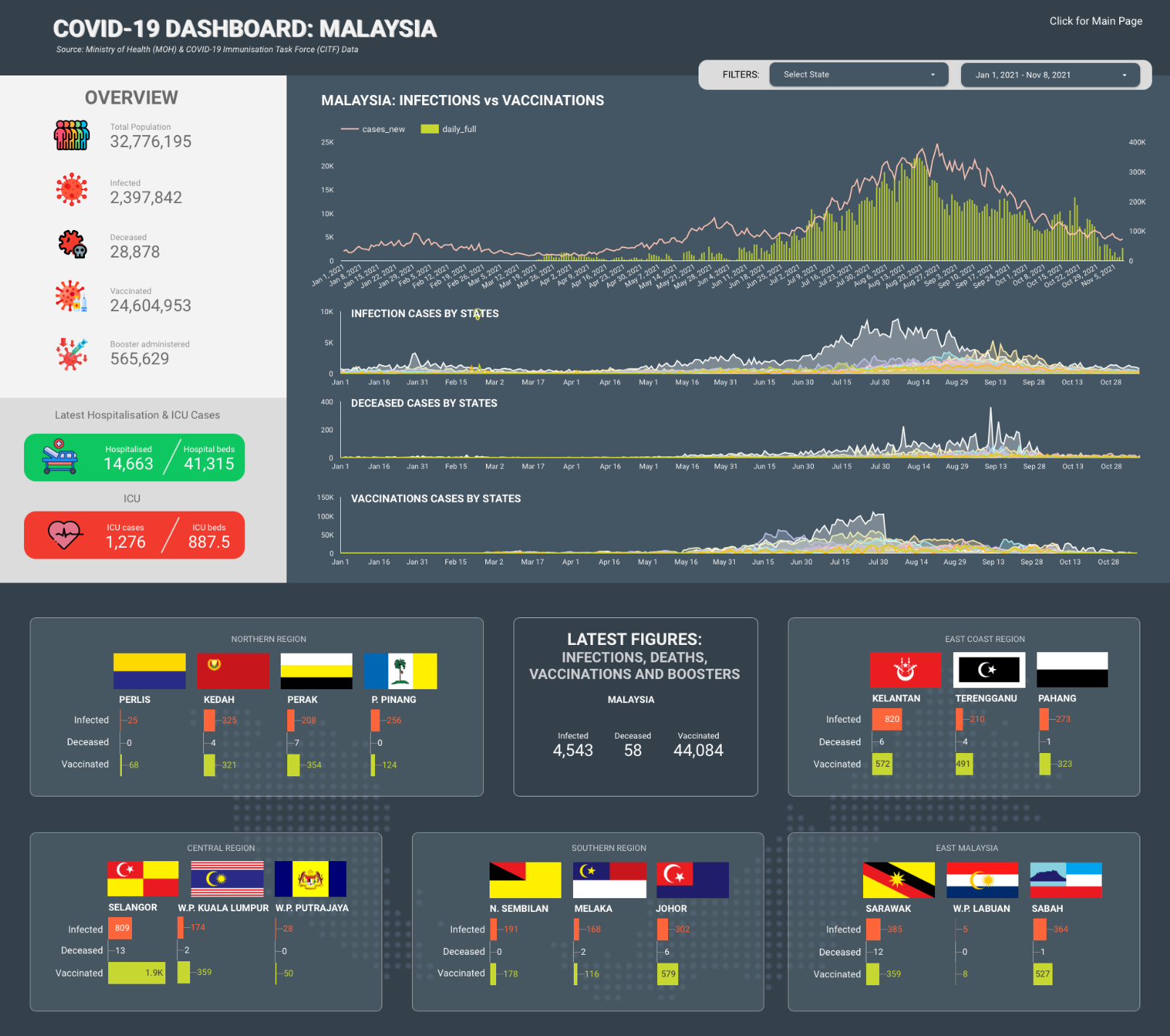Hi! I'm Chua
A Research Professional &
A Data Analyst
I use data to convey stories through visualisations.
I use data to convey stories through visualisations.

I've worked in research administration for over two decades. Aside from my primary role as a supervisor and team leader, one of my top priorities is to transform data into valuable and informative insights. This is accomplished using data analytics and conveyed through infographics rather than text. I am skilled for most data-science steps: data pre-processing, application of statistical methods, data visualization and results communication.
Name : Chua Khong Wai
Nationality : Malaysian
Experience : 20+ Years (10 Years in senior executive roles)
Freelance : Available (check my cv)
Languages (spoken) : English, Bahasa Malaysia, Cantonese, Mandarin
Languages (written) : English, Bahasa Malaysia
Premier Business Management Program (PBMP) Certificate - Charles River Centre (CRC)
2017M.Sc in (Biochemistry) - Universiti Kebangsaan Malaysia (UKM)
2004B.Sc (Hons) in Biotechnology with minor in Management - Universiti Kebangsaan Malaysia (UKM)
2007Additional information is available in my curriculum vitae.
Some highlights of my work and achievements. If you are interested to know more, let's connect!


Research management encompasses all that universities can do to maximise the impact of their research activity. It involves support in discovering new sources of funding, presenting research proposals, and providing guidance on project budgeting and contract negotiation with external sponsors. It combines project management and financial control systems. It also includes assistance in commercialising research discoveries, information sharing, and dissemination to a broader population.
Some of my accomplishments as a research professional are listed below.
Within five years, the research ranking of the university rose from three to five stars.
Research income increased by 80 percent within the same period and achieved through expanding the delivery of research outputs such as intellectual property (IP), products, and services (other than academic publications) to improve research reputation.
Introduced a new approach for enhancing and disseminating scientific achievements, which resulted in the receipt of more than 20 innovation prizes, compared to none earlier.
Improved the patent support system, which resulted in more research funds and partnerships, as well as a rise in IP filings to more than 30 in three years.
International research and consulting businesses continue to retain my services to provide insight and information on a variety of subjects. In 2021, I was provided opportunities on a regular basis and contributed to about ten projects.


I've established three research units for three different institutions. I learnt how to integrate new and traditional practises, as well as the most effective methods for developing procedures, documentation, and more. Thus far, my approach of a progressive rollout and consultations to improve the outcome and instil acceptance among others has shown to be effective.
Following that, I was offered the opportunity to work with a notable leader to raise the prominence of a university's research. We required diversification of our resources and training for prospective personnel. As a result, the scope of our portfolio has expanded. We predicted a decline in service quality and a rise in expenses as a result of inefficient operations and personnel skill underutilization. I was subsequently assigned to portfolio reorganisation, which required realigning personnel and duties, as well as culture, leadership, and skills. Stakeholders expected the exercise to fail. However, two years after the reorganisation, my office had developed into the preferred option for a number of people.
Two assessments completed following the reorganisation resulted in a positive rating and several good comments about my office. The responsibility matrix was adopted by a management consulting firm, which used the templates as the foundation for another reorganisation effort.


I could not have achieved the successes I have in the past without the help of my colleagues. They were critical to the project's success. According to author Simon Sinek, technical expertise and personal performance are vital, but a leader's success is ultimately defined by the success of the people under his or her leadership.
Managers have a fundamental role to explain how the organisation's vision and goal affect each individual employee both in a personal and professional capacity. I would accomplish it by having team members obtaining a clear grasp of their role and responsibilities. Another essential component is to encourage socialising outside of work and create ways for such relationships to develop to build trust in the team environment. Finally, I would give opportunities for employees to consciously and actively submit feedback, incorporate their new ideas and engage in teamwork across areas.


I became aware of the usefulness of information as a research professional after being exposed to data reviews and audits. My interest was piqued by analytics. However, I faced two significant obstacles: a lack of knowledge about data applications and data management resources (tools). On the other hand, those limits encouraged me to expand my knowledge in order to maximise the resources available to me. I created databases in Microsoft Access and dashboards in Microsoft Excel. The measures were implemented and have remained effective to this day.
I took advantage of the opportunity to expand my knowledge and skills in data analytics (Python, PostgreSQL, HTML, CSS, Javascript, and NodeJS), and then took on a project and developed a script to automate data mining. The script will:
minimise the workload required to extract data that takes a long time;
create a performance dashboard that will deliver significant data insights; and
automate the script's execution according to the user-defined refresh interval - this ensures that data is current and dashboard information is accurate.
I estimate that the script and dashboard will save effective workload by 0.5 full-time (0.5 full-time staff time).
This is an example of a dashboard (not related to the above-mentioned project). Python is used to create a script that extracts and analyses the data. The script updates the data daily and subsequently export the programmed analytics to a file that the dashboard will access. Since the dashboard is interactive, it encourages users to explore the data and obtain essential information on topics of interest.


I've spent less than a year learning to programme in Python and other languages. I'm delighted to be able to use my newly acquired knowledge and abilities to build something new, and anticipate creating more in the near future.


Today, analytics is probably the most critical tool a business has for gaining customer insights. This is why companies such as Amazon and Google are investing heavily in not only data collection, but also data enablement for the organisation. As AI and machine learning continue to advance, so does our understanding of and use of analytics. While businesses previously focused on collecting descriptive data about their customers and products, they are increasingly focused on extracting predictive and prescriptive insights from the data they collect. Most of us have always used descriptive analytics since our analyses utilise what has happened in an organisation to create insights from the data.
Another layer of data analytics will be predictive analytics. This phrase refers to a group of statistical methods for analysing current and past data in order to forecast the future. Predictive analytics, which rely on more complex machine learning and AI processes and algorithms, help in predicting what will happen. Predictive analytics models are used by businesses to estimate inventories, manage resources, and operate more efficiently. Others may use it to forecast a customer's next order, a movie buff's favourite flicks, and a variety of other things.
After being familiar with Python and the relevant data science packages, it was logical for me to move on to machine learning. Despite the fact that I am new to this field, I am confident that my abilities will complement my data analytics and, when combined with my expertise, will result in greater insights.
A sample of an analysis using kaggle dataset can be viewed here. It was my first attempt and I'm looking forward to sharing a few more in the near future as I have opportunity to explore other datasets.
